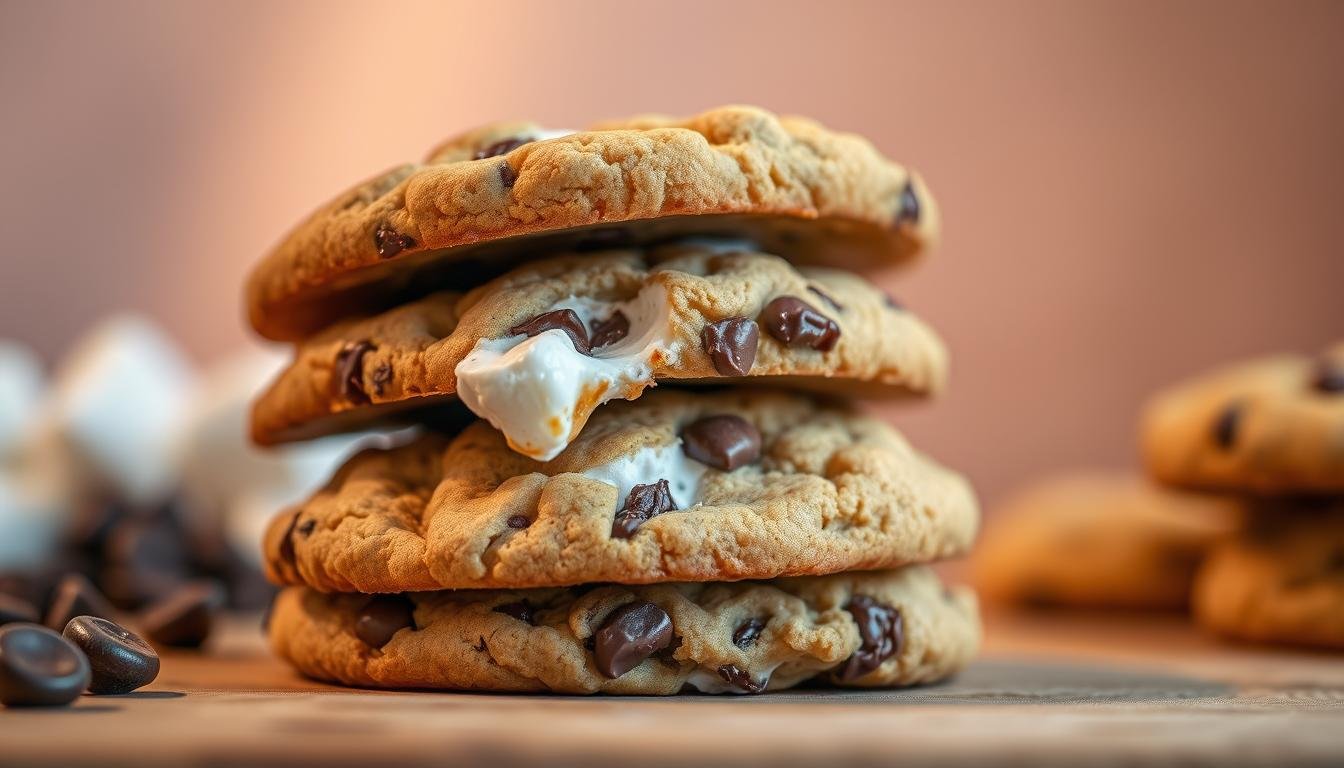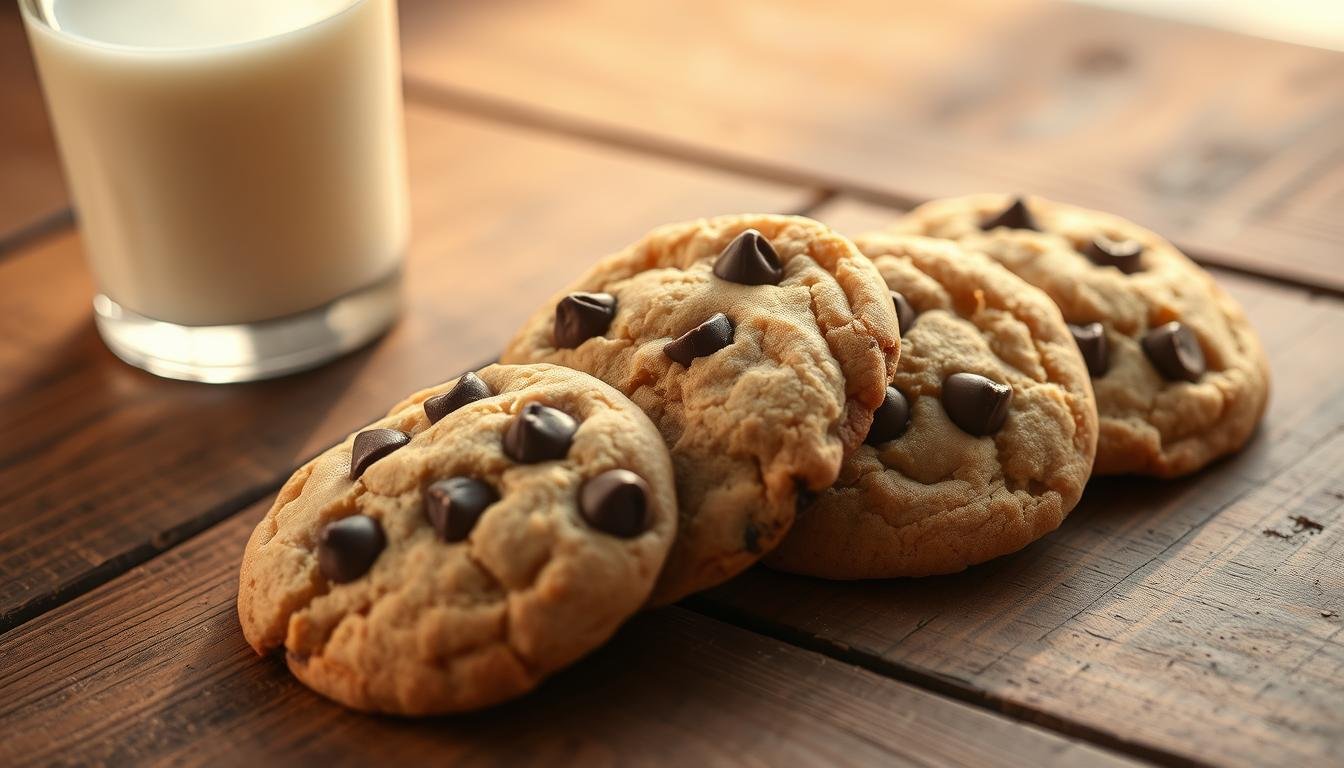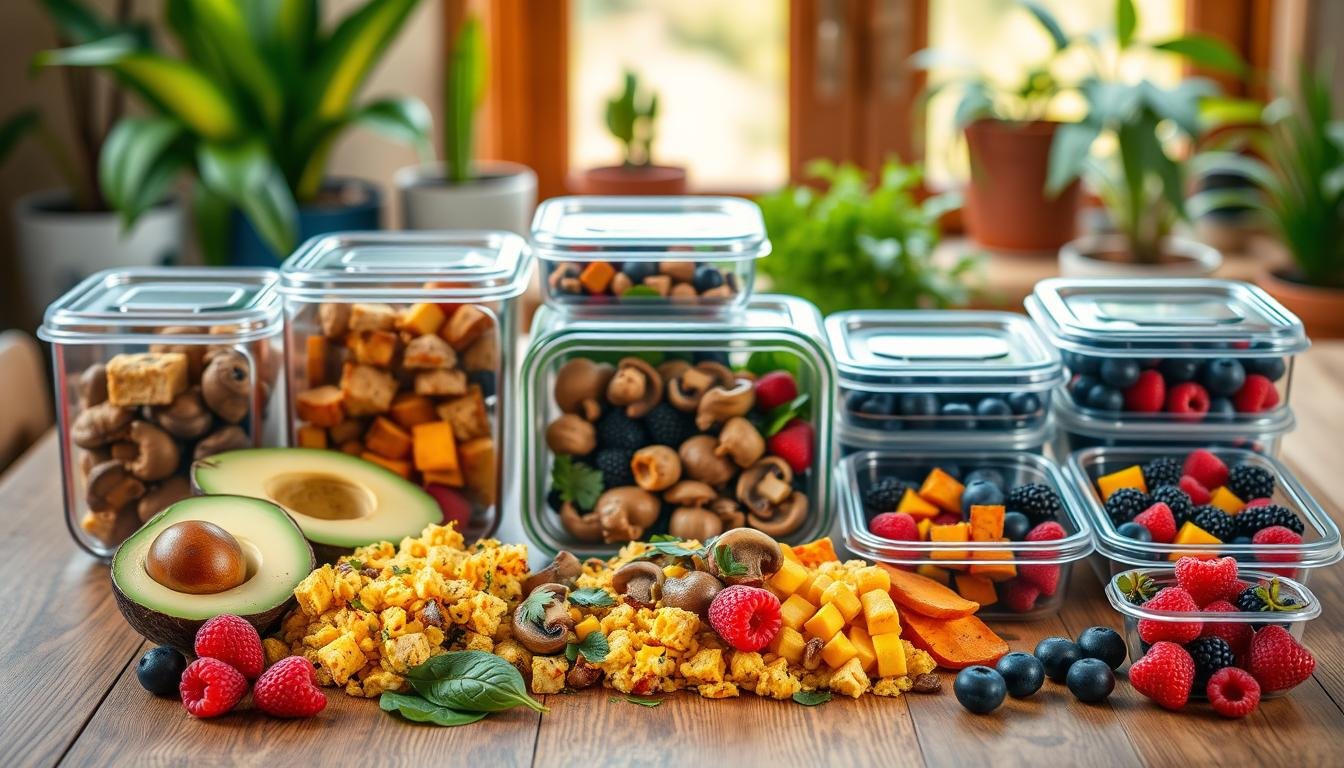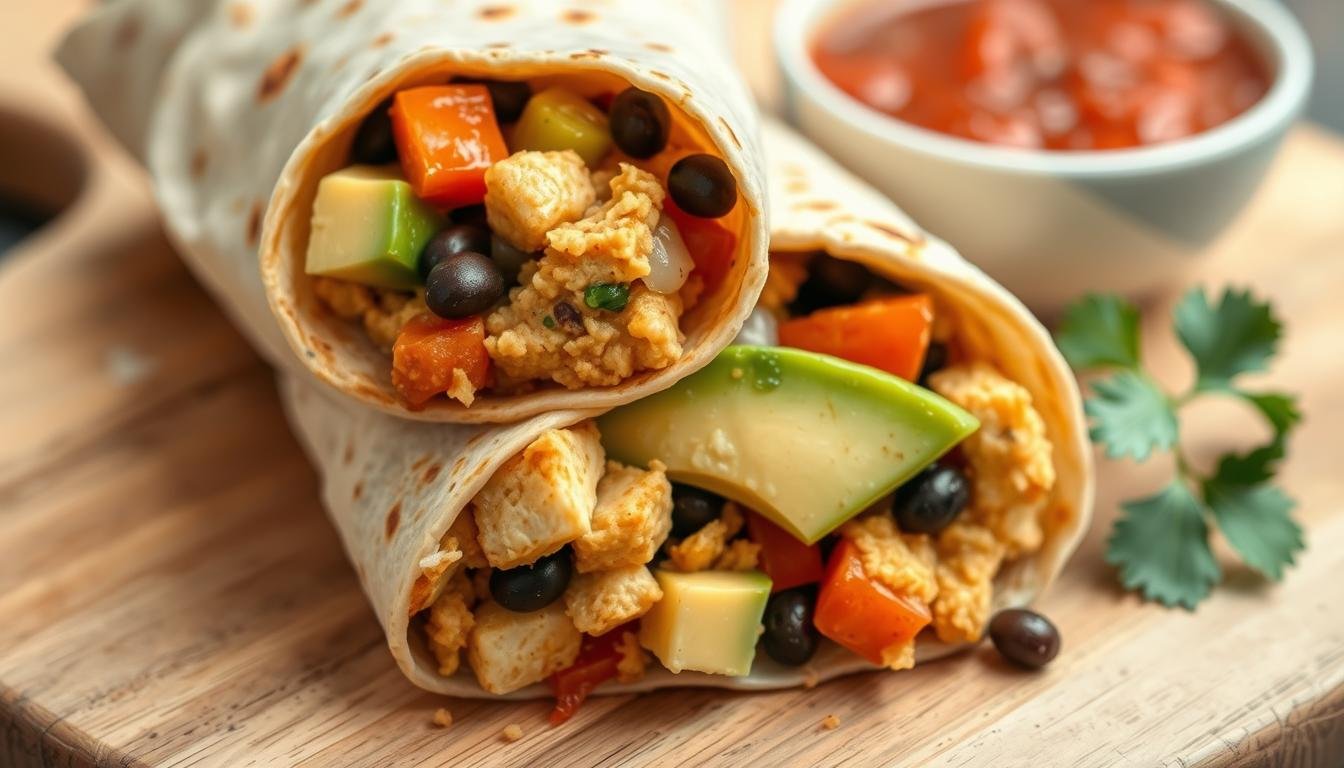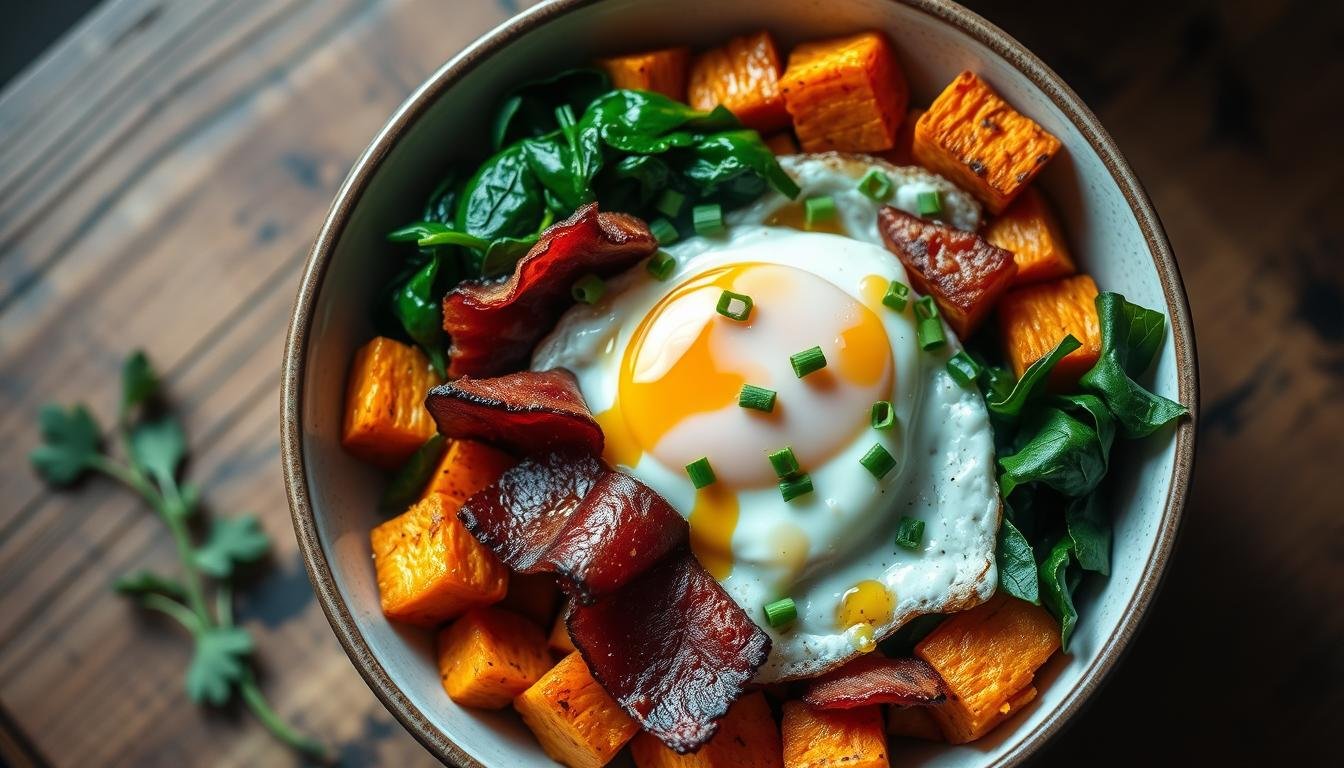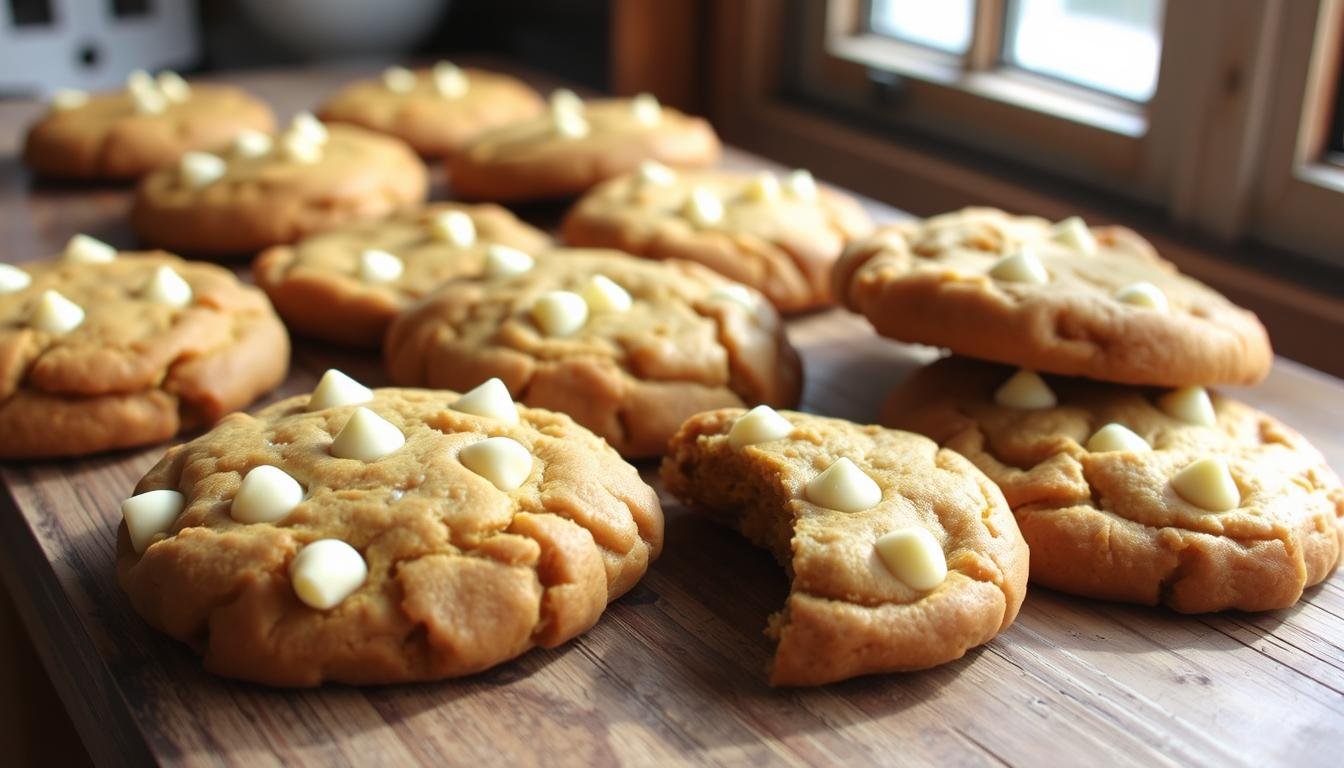Warm chocolate chip cookies are a comfort food. They have crispy edges and chewy centers. They also have melty chocolate in every bite.
For years, I’ve been trying to make the perfect cookie. Today, I’m excited to share a version that’s healthier. It keeps the magic alive with a smarter approach to ingredients.
What if you could enjoy this classic with a slightly healthier twist? Swapping butter for Crisco reduces saturated fat. It doesn’t lose texture.
Baker Bettie found that shortening makes cookies taller and softer than butter. Adding dark chocolate or oats makes it guilt-free.
I’ve tested many techniques to get foolproof results. These cookies work well with whole wheat flour or sugar alternatives. Ready to bake a batch that’s both irresistible and mindful? Let’s dive in.
Key Notes;
- Crisco creates softer textures and reduces cholesterol compared to traditional butter
- Dark chocolate or rolled oats add nutritional value without compromising taste
- Tested methods ensure consistent results, even with ingredient substitutions
- Cookies stay fresh for days when stored in airtight containers
- Simple swaps make this recipe adaptable for various dietary preferences
- Perfect for gatherings or solo treats with minimal prep time
Why Choose Chocolate Chip Cookies with Crisco Recipes?
Crisco shortening might be the secret to taller, tender cookies. It’s a plant-based fat that beats butter in many ways. Generations of bakers love Crisco for classic chocolate chip cookies because it keeps them soft and structured.
The Science of Shortening in Baking
Crisco has 100% fat, unlike butter’s 15-20% water. This makes cookies less likely to spread. They stay thick instead of getting flat.
Baker Bettie says Crisco is better because it doesn’t let cookies spread. “Butter’s water turns to steam, pushing cookies outward. Crisco keeps dough cohesive, letting rise happen upward.” This is why chocolate chip cookies made with Crisco often look like they came from a bakery.
Crisco vs Butter: Texture and Health Tradeoffs
Let’s look at the fat debate:
| Crisco | Butter | |
|---|---|---|
| Texture | Softer crumb, taller shape | Crisp edges, chewy center |
| Spread | Minimal (1/4″ during baking) | Significant (up to 1″) |
| Saturated Fat | 3g per tbsp | 7g per tbsp |
Ruth Wakefield liked butter for flavor, but Crisco is better for baking. It has 50% less saturated fat. You can mix Crisco and butter for the best of both worlds.
Gathering Your Ingredients (with Alternatives)
Making great homemade chocolate chip cookies starts with picking the right ingredients. Instead of butter, our recipe uses Crisco. This gives your cookies a perfect mix of chew and crispness. Here’s what you need, including options for different diets and tastes.
Essential Components
These eight ingredients are the base of your cookies:
- Crisco shortening (¾ cup/170g) – makes them tender
- Granulated sugar (1 cup/200g) + brown sugar (1 cup/220g)
- 2 large eggs + 2 tsp pure vanilla extract
- All-purpose flour (2¾ cups/330g) – or try Jacques Torres’ blend: 50% pastry flour + 50% bread flour
- 1 tsp baking soda + 1 tsp salt
- Chocolate chips (12 oz) – more on varieties below
Need gluten-free? Use 1:1 baking blend instead of AP flour. Want less sugar? Replace ¼ cup granulated sugar with monk fruit sweetener. It keeps the texture the same.
Crisco Shortening Measurements
Getting the right amount of shortening is key. Here are the correct amounts:
| Measurement | Volume | Weight (grams) |
|---|---|---|
| Standard | ¾ cup | 170g |
| Double Batch | 1½ cups | 340g |
Always pack Crisco like brown sugar in measuring cups. Cold shortening mixes better. Chill it for 15 minutes before mixing.
Chocolate Chip Varieties
Ruth Wakefield, the Toll House inventor, chose high-quality chocolate. Here are my favorites:
- Guittard 63% discs – melts well
- Valrhona feves – rich flavor
- Nestle Toll House morsels – affordable
Chop baking bars for chunky, gooey cookies. For deep chocolate taste, use 60% dark chips. Milk chocolate fans? Mix ½ cup milk chips with ½ cup semisweet.
Essential Baking Equipment You’ll Need
Great news: You don’t need fancy gadgets to make easy chocolate chip cookies with Crisco. We’ll focus on simple tools that give you great results without spending a lot.
Must-Have Tools
Here’s what I always keep within arm’s reach:
- Mixing bowls (one large, one medium)
- Hand mixer – works perfectly for creaming Crisco and sugars (stand mixer optional)
- Rubber spatula for scraping every bit of dough
- Standard measuring cups and spoons
Baker Bettie swears by silicone baking mats for even heat. But I’ve had great results with Double Tree Hotel’s parchment paper. Both keep cookies from sticking – use what you already have!
Baking Sheet Preparation
Your cookie canvas matters more than you think. For crispy edges and chewy centers:
- Use light-colored aluminum sheets – dark pans overbrown bottoms
- Leave 2″ between dough mounds for proper spreading
- Rotate pans halfway through baking if your oven has hot spots
Pro tip: Chill empty baking sheets while preheating the oven. Cold metal slows dough spread for thicker cookies – a game-changer for texture control!
Step-by-Step Cookie Dough Preparation
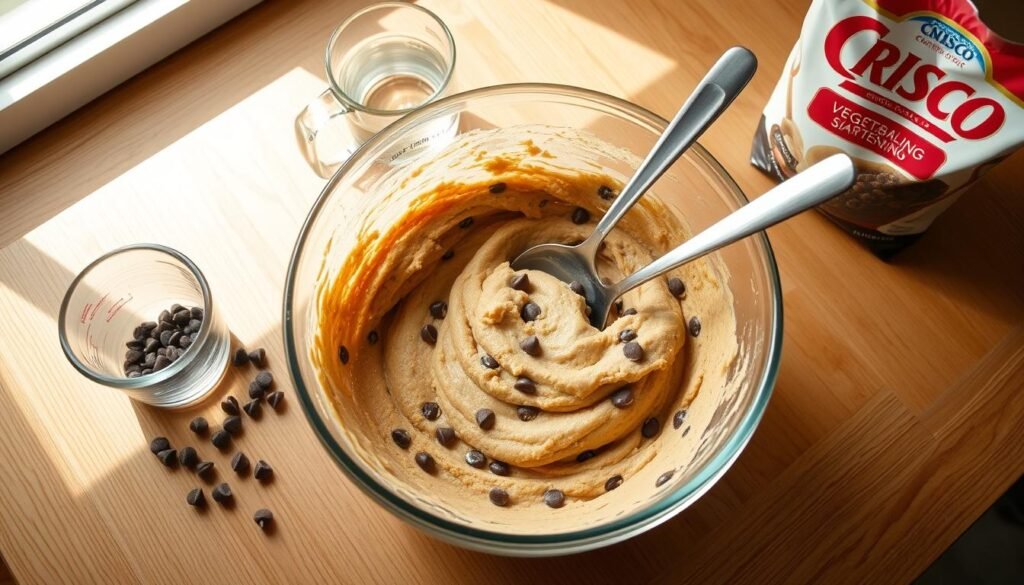
Learning to make cookie dough with Crisco is all about being precise. We’ll go through three key steps. These steps help make the cookies soft in the middle, chewy on the edges, and just right in sweetness.
1. Creaming Crisco and Sugars Perfectly
Start with room-temperature Crisco for the best mix. Use a stand mixer or hand beaters on medium speed. Mix 1 cup Crisco with ¾ cup white sugar and ¾ cup brown sugar.
For the perfect mix, Baker Bettie says 3 minutes of continuous mixing is key. This makes the dough light and fluffy.
Look for these signs of a good mix:
- Pale yellow color
- Fluffy texture like whipped frosting
- No sugar granules left
2. Incorporating Eggs and Vanilla
Add eggs one at a time, letting each mix fully before adding the next. Use room-temperature eggs (68-72°F) for smooth mixing. Ruth Wakefield’s Toll House experiments showed this helps avoid dough separation. Mix in 2 teaspoons vanilla extract until the batter shines.
“Cold eggs shock the fat structure. Think of it as giving your dough thermal shock therapy!”
3. Dry Ingredient Integration
Whisk 2½ cups flour, 1 teaspoon baking soda, and 1 teaspoon salt in a separate bowl. Add the mix in three parts to avoid overworking the gluten. Jacques Torres’ layered mixing method is the best here:
- Mix first third on low speed until just combined
- Scrape bowl edges
- Repeat until no dry patches remain
Fold in 2 cups chocolate chips by hand with a silicone spatula. The dough should hold its shape but feel a bit sticky.
Baking Perfect Cookies: Time and Temperature Guide
Getting the oven right makes cookies best chocolate chip cookies. A small change in temperature can change how they taste. Where you place the rack is also key to even baking.
Oven Rack Positioning
Always bake cookies on the middle rack. This way, heat from above and below is balanced. Double Tree’s cookies get their golden edges from this method. Lower racks can burn the bottoms before the tops are done.
325°F vs 350°F Experiments
Baker Bettie starts with 350°F for cookies that are crispy on the outside and chewy inside. For softer cookies, try 325°F for 14-16 minutes. Crisco’s 375°F makes cookies extra crispy but watch them after 8 minutes.
| Temperature | Bake Time | Texture |
|---|---|---|
| 325°F | 14-16 min | Uniform softness |
| 350°F | 10-12 min | Crisp edges, chewy center |
| 375°F | 8-10 min | Extra crispy |
Visual Doneness Cues
Check for golden-brown edges and pale centers that are no longer shiny. Cookies will firm up as they cool. Take them out when centers look a bit soft. Let them cool on the sheet for 3 minutes before moving them to racks.
Cooling Techniques for Ideal Texture
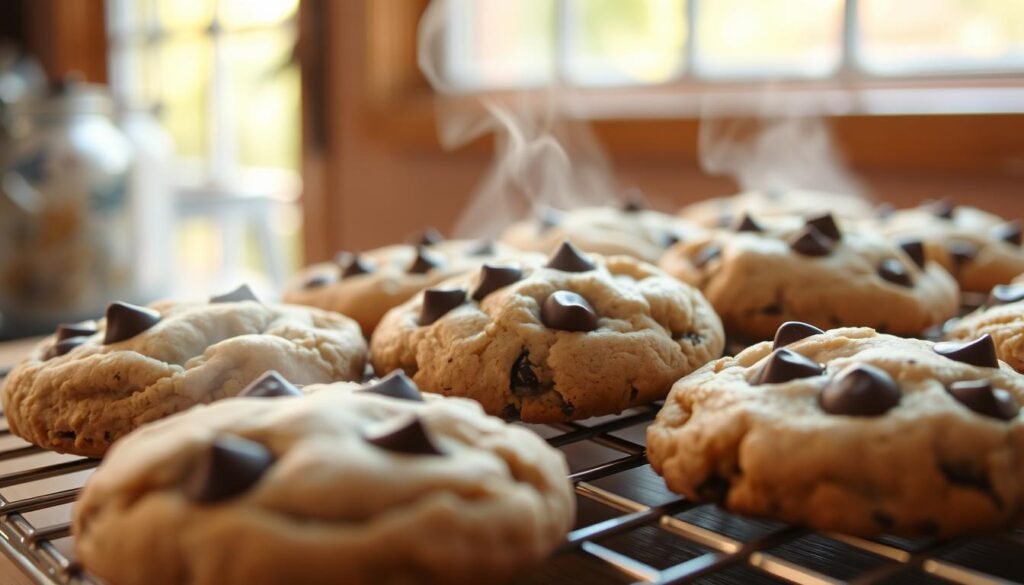
Your journey to perfect delicious chocolate chip cookies doesn’t end when the oven timer dings. How you handle cooling is key. It decides if you get chewy centers, crisp edges, or sad crumbs. Let’s explore two methods to keep your cookies perfect.
Pan Cooling vs Rack Transfer
Baker Bettie’s 5-minute sheet rest method uses carryover cooking. It lets residual heat set the cookies’ centers gently. This makes them slightly crisp outside and tender inside.
Pastry legend Jacques Torres likes to transfer cookies to racks right away. This stops the carryover cooking fast. It makes thinner cookies with crispier bottoms. I tried both methods together:
| Method | Texture Result | Best For | Time Required |
|---|---|---|---|
| Pan Cooling | Chewy center + soft edges | Classic cookie lovers | 5-7 minutes |
| Rack Transfer | Crisp base + delicate crunch | Texture enthusiasts | 10-12 minutes |
Resisting Early Sampling Temptation
Warm cookies smell amazing. But eating them too soon ruins their texture. Molten chocolate can burn your tongue, and soft centers can get gummy.
“The first cookie that comes out of the oven is always the tester. The second one is for eating.”
– Anonymous Baker Wisdom
Wait 15 minutes after transferring to racks. Use this time to take photos or get your milk ready. Waiting is worth it for delicious chocolate chip cookies that stay perfect.
Health Considerations When Using Shortening
Baking treats like chocolate chip cookies doesn’t mean you have to give up health. Using Crisco shortening is a cholesterol-free, trans-fat-free choice compared to butter or old shortenings. We can enjoy great taste and health without losing texture.
Moderation Strategies
It’s important to control how much you eat. Barbara Bush’s recipe makes 3-dozen cookies, which is a lot. But, eating smaller portions makes it okay to enjoy.
Freezing dough balls is a smart move. It lets you bake just one cookie at a time. This way, you don’t eat too much and your cookies stay fresh.
Crisco is now zero grams of trans fat per serving. But, it’s full of calories. Eating one cookie with a protein or fruit snack is a good way to balance it out.
Sugar Reduction Options
Annette Funicello found you can use less sugar without cookies falling apart. Try using ⅔ cup sugar instead of 1 cup. For a softer cookie, add unsweetened applesauce or mashed banana.
Using dark chocolate chips (70% cacao or higher) adds sweetness. This lets you cut down on sugar by up to 20%.
“Sugar isn’t just about sweetness—it affects spread and structure. Reduce gradually and monitor dough consistency.”
Dietary Accommodations
For gluten-free cookies, use 1:1 gluten-free flour instead of all-purpose flour. Vegans can use flax eggs (1 tbsp ground flax + 3 tbsp water per egg) without changing the cookie’s texture.
Butter is not a good substitute for Crisco. It makes cookies thinner because of its water content.
Want to lower sodium? Reducing baking soda by ¼ teaspoon cuts sodium by 12% per cookie. Crisco’s zero-cholesterol profile makes these cookies better for your heart. Using whole-grain flour is another way to make them healthier.
Nutritional Benefits of Ingredient Swaps
Changing ingredients in your homemade chocolate chip cookies can make them healthier. By using whole grain flour, dark chocolate, and less sugar, you get tasty treats that are good for you too.
Whole Grain Flour Advantages
Switching to whole wheat flour adds a lot of fiber—4 grams per serving. This makes you feel full longer and helps with digestion. To keep cookies soft, mix whole wheat with regular flour (50/50).
Pasty chef Michael Romano says this mix keeps cookies soft. It also adds iron and B vitamins.
Dark Chocolate Benefits
Dark chocolate is not just tasty—it’s full of flavonoids. These are good for your heart. Ruth Wakefield found that chocolates with 70%+ cacao have more flavonoids than milk chocolate.
Try baking with different cacao percentages to see the difference:
| Cacao Percentage | Flavonoid Content (mg/oz) | Best For |
|---|---|---|
| 60-69% | 500 | Balanced sweetness |
| 70-85% | 800 | Intense flavor |
| 90%+ | 1,100 | Bold, bitter notes |
Reduced Sugar Impact
The Diabetes Council suggests cutting sugar by 25% in baked goods. Here’s how I do it:
- Use mashed bananas or applesauce for ⅓ of the sugar
- Keep brown sugar for moisture (Jacques Torres’ chewiness trick)
- Add vanilla extract to make sweetness seem better
This way, you keep the cookies soft but cut down on empty calories. It’s great for homemade chocolate chip cookies fans who want to eat less sugar.
Pro Tips for Bakery-Style Results
Want cookies that taste like they came from a bakery? It’s all about three key steps. These steps help make your cookies taste like they were made by a pro.
Dough Chilling Secrets
Patience pays off when working with cookie dough. Jacques Torres’ 72-hour chill is key for deep flavors. Even 24 hours can make a big difference.
Keep dough in an airtight container, not plastic wrap. This stops it from getting dry. Also, portion dough balls before chilling to avoid them sticking together.
Scooping Consistency Tricks
Uniform cookies bake evenly. Use a #40 cookie scoop (1.5 tablespoons) for perfect sizes. If you don’t have a scoop, roll dough into balls with your hands.
Make sure to leave 2 inches between each cookie. This prevents them from steaming instead of baking properly. I learned this the hard way!
Salt Enhancement Methods
A little flaky salt makes cookies better. Barbara Bush’s recipe uses Maldon sea salt right after baking. For the best taste:
- Use 3-5 flakes per cookie
- Apply while cookies are warm
- Avoid iodized table salt
This adds texture and balance. It turns good cookies into the best chocolate chip cookies you’ll ever have. Just remember, a little salt goes a long way!
Storing Your Cookies for Lasting Freshness
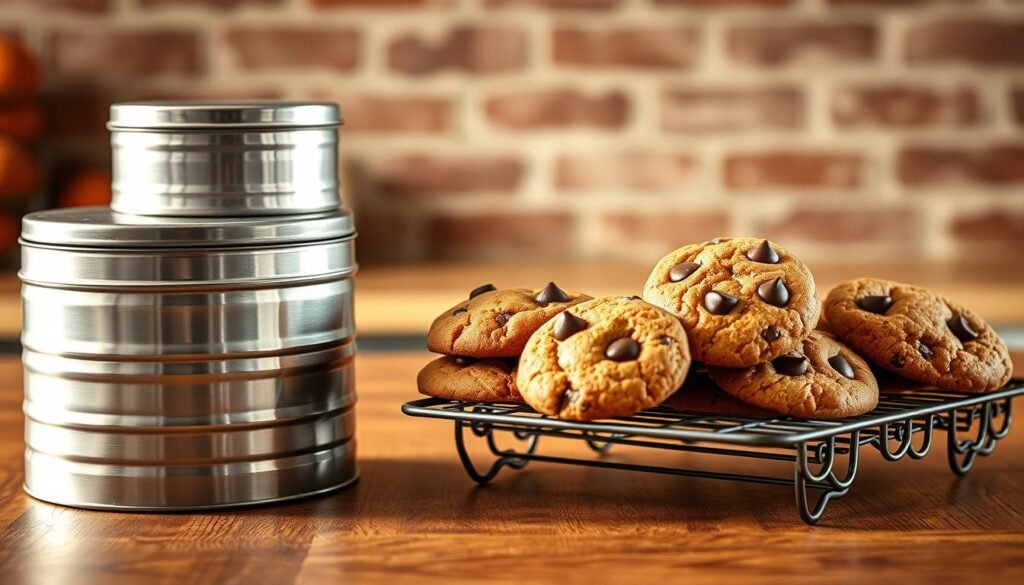
There’s nothing better than biting into a soft, chewy cookie days later. The right storage keeps them perfect. I’ve tried many ways to keep cookies fresh, and they all work well.
Countertop Storage Solutions
For keeping cookies fresh for a few days, use airtight containers. A study showed glass containers keep more moisture than plastic. Place cookies between parchment paper to stop them from sticking.
Adding a slice of bread helps absorb moisture without making them soggy. Plastic containers are okay, but make sure the lids are thick and not cracked. I move older cookies to the top every two days to keep them fresh for up to five days.
Freezing Dough and Baked Cookies
Doh! Boy’s method lets you bake cookies whenever you want. Scoop dough into balls and freeze them on a parchment-lined tray for two hours. Then, put them in labeled freezer bags.
Use this format:
- Date prepared
- Quantity per bag
- Baking temperature reminder
Frozen dough lasts three months. When you want cookies, bake them at 325°F for two extra minutes. If they’re already baked, thaw them in the fridge overnight to make them soft again.
Fixing Common Cookie Issues
Baking easy chocolate chip cookies can sometimes go wrong. Let’s fix three common problems: flat cookies, dry dough, and uneven baking. We’ll use tips from expert bakers.
Flat Cookie Prevention
If your cookies are too thin, check these things first:
- Oven accuracy: Baker Bettie says to use an oven thermometer. A 25°F difference can mess up the texture
- Mixing time: Wakefield’s butter studies show too much gluten from overmixing. Stop mixing when flour streaks are gone
- Chill time: Chill the dough for 30 minutes before baking. This helps the shortening solidify
Dry Dough Recovery
Crumbly dough that won’t shape up? Try this trick from cookie lore:
- Add milk 1 tsp at a time (up to 4 tsp per batch)
- Fold gently with a spatula – no electric mixers
- Portion dough right away before it dries more
Uneven Baking Solutions
For cookies that brown evenly, follow Double Tree Hotel’s advice:
- Rotate baking sheets front-to-back at the halfway mark
- Leave 2″ between cookie mounds for air to flow
- Use same-sized scoops – I like #40 portioners
Remember, oven hot spots affect easy chocolate chip cookies more than dense cakes. Test different rack positions with single-cookie batches to find your oven’s quirks.
Mastering the Art of Crisco-Based Cookie Crafting
Making delicious chocolate chip cookies with Crisco is a mix of science and tradition. This recipe gives you consistent results because of shortening’s special ability. It keeps the dough shape and makes the cookies tender.
Whether you follow Jacques Torres’ chunky recipe or Ruth Wakefield’s original, Crisco makes it work. It connects old baking ways with today’s needs.
Try new things to make the cookies your own. Chill the dough overnight for stronger flavors. Mix milk and dark chocolates for more taste.
Make cookies with less sugar using coconut sugar or honey. This is good for those watching their diet but want great texture. Make sure to portion the dough right and place it in the oven carefully for even baking.
Share your cookie successes with #CriscoCookieClassics. It’s a place for cookie lovers to share. Whether you’re new to baking or have been doing it for years, these cookies are special. The process of making them is just as important as the cookies themselves.
FAQ
Can I substitute butter for Crisco in this chocolate chip cookie recipe?
Butter makes cookies taste rich. But Crisco makes them tall and soft. You can mix butter and Crisco for a special taste. Ruth Wakefield used both in her famous recipe.
How does using whole wheat flour affect homemade chocolate chip cookies?
Whole wheat flour adds fiber, making cookies healthier. Jacques Torres uses 50% whole wheat flour. It makes cookies chewy and adds 4g of fiber per serving.
Why do my cookies spread into flat pancakes?
Cookies spread if the dough is too warm or the oven is off. Chill the dough for at least an hour. Use an oven thermometer to check the temperature. Crisco helps, but fresh baking powder is key.
What’s the ideal chocolate chip variety for classic chocolate chip cookies?
Guittard 63% cacao wafers melt well. Valrhona chunks add a special touch. Nestle Tollhouse semi-sweet is easy to find. Press extra chips on top for a nice look.
Can I freeze dough for easy chocolate chip cookies later?
Yes! Use a #40 portioner to scoop dough. Freeze on parchment, then bag. Frozen dough bakes well at 350°F, just add 2 minutes.
How do I achieve crisp edges with chewy centers like professional bakeries?
Chill dough for 72 hours for best flavor. Bake at 375°F until edges are golden. Let cool for 5 minutes to set the texture.
Is the Crisco in this recipe trans-fat-free?
Yes! Crisco has 0g trans fat. It’s made from soybean oil. You can even cut sugar to ⅔ cup for a healthier cookie.
Why use silicone mats versus parchment paper?
Silicone mats brown cookies evenly and last long. Parchment prevents sticking and is easy to clean. Jacques Torres prefers ungreased aluminum for crisp bottoms.



